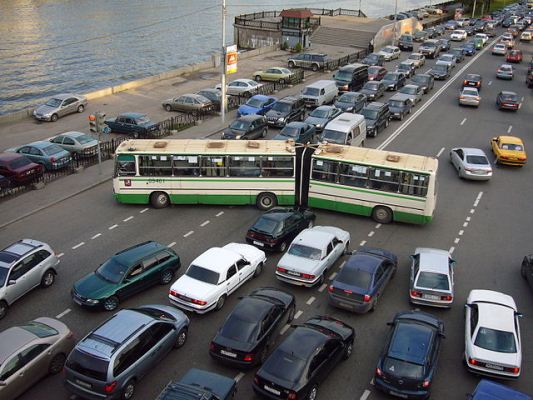 The transport sector is not on track towards achieving sustainable mobility, according to the Global Mobility Report launched October 19.
The transport sector is not on track towards achieving sustainable mobility, according to the Global Mobility Report launched October 19.
The report is the first ever assessment of the transport sector and was produced by the Sustainable Mobility for All Initiatives (SuM4All), a worldwide consortium of over 50 leading organizations in the transport sector.
It covers all transport modes, tracking progress towards sustainable mobility around the world in four areas. In the area of universal access, it said about 450 million people in Africa—or more than 70% of its total rural population—are estimated to have been left unconnected to transport.
In terms of efficiency, it noted that transporting a container of avocados from Kenya to the Netherlands requires 200 interactions and more than 20 documents, at a cost equal to that of shipping. Efficient supply chains can increase farmer income 10% to 100%.
On safety, almost 1.3 million people die on the world’s roads every year and tens of millions are seriously injured. Traffic crashes are the leading cause of death among young people aged 15 to 29.
And green mobility efforts lag, too. The report said transport emits 23% of all energy-related greenhouse gases, and its CO2 emissions could grow by 40% by 2040.
“The world is off track to achieving sustainable mobility. The growing demand for moving people and goods is increasingly met at the expense of future generations,” said José Luis Irigoyen, senior director of transport & ICT global practice at the World Bank. “It is urgent to reverse this trend. The costs for society of increased mobility in terms of congestion, accidents, inefficiencies and pollution are simply too high.”
“Sustainable mobility is crucial for the achievement of the 2030 Agenda for Sustainable Development and its SDGs,” said a representative of the United Nations Department for Economic and Social Affairs. “It enables access to services and opportunities through sustainable transport, thus advancing economic and social development to benefit today’s and future generations.”
“The Global Mobility Report is the product of a true collective effort,” said Jari Kauppila, head of statistics and modelling of the International Transport Forum at the Organisation of Economic Cooperation and Development. “The breadth of knowledge assembled under the umbrella of the Sustainable Mobility for All initiative is what makes this comprehensive assessment of the transport sector possible and also unique.”
“The Global Mobility Report, with proposed targets on accessibility, safety, efficiency and green transport, will accelerate the transition to sustainable transport both in the developing and developed world,” said Cornie Huizenga, secretary general of The Partnership on Sustainable, Low Carbon Transport.
“In Latin America, the high rates of urbanization require mobility solutions that provide access to safe, affordable, accessible and sustainable transport systems for all,” said Luis Carranza Ugarte, president of Banco de Desarrollo de América Latina.
“Good public transport has a huge impact on urban economies. It expands labor markets, offers more opportunities and better accessibility. The SuM4All initiative will be essential to realizing this,” said Alain Flausch, secretary general of the International Association of Public Transport.
The report’s tracking framework builds on indicators developed for the Sustainable Development Goals. The baseline established with this first edition will be updated every two years, enabling governments to measure progress in how they provide accessible, efficient, safe, and clean transport.
Sustainable Mobility for All is a global partnership acting collectively to transform transport and meet the mobility expectations of tomorrow in a sustainable way. SuM4All includes multilateral development banks, bilateral donor agencies, United Nations departments, agencies, programs and regional commissions, intergovernmental organizations, global civil society organizations, private sector organizations, and academic institutions.
Photo: Nevermind2





